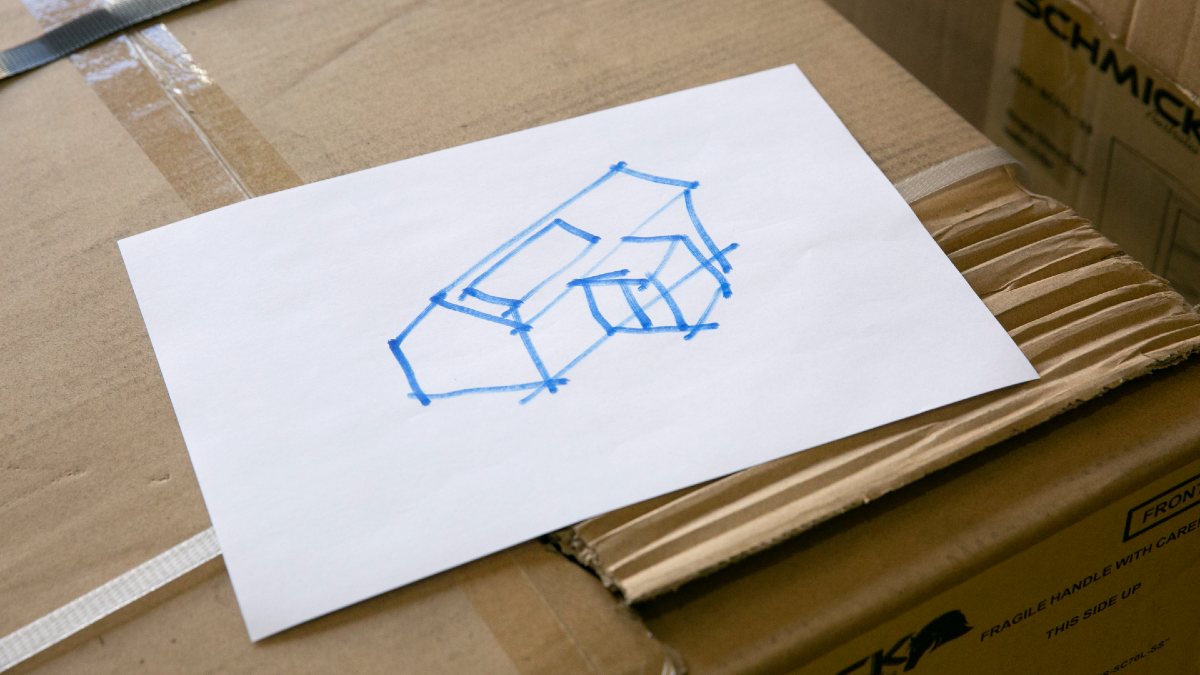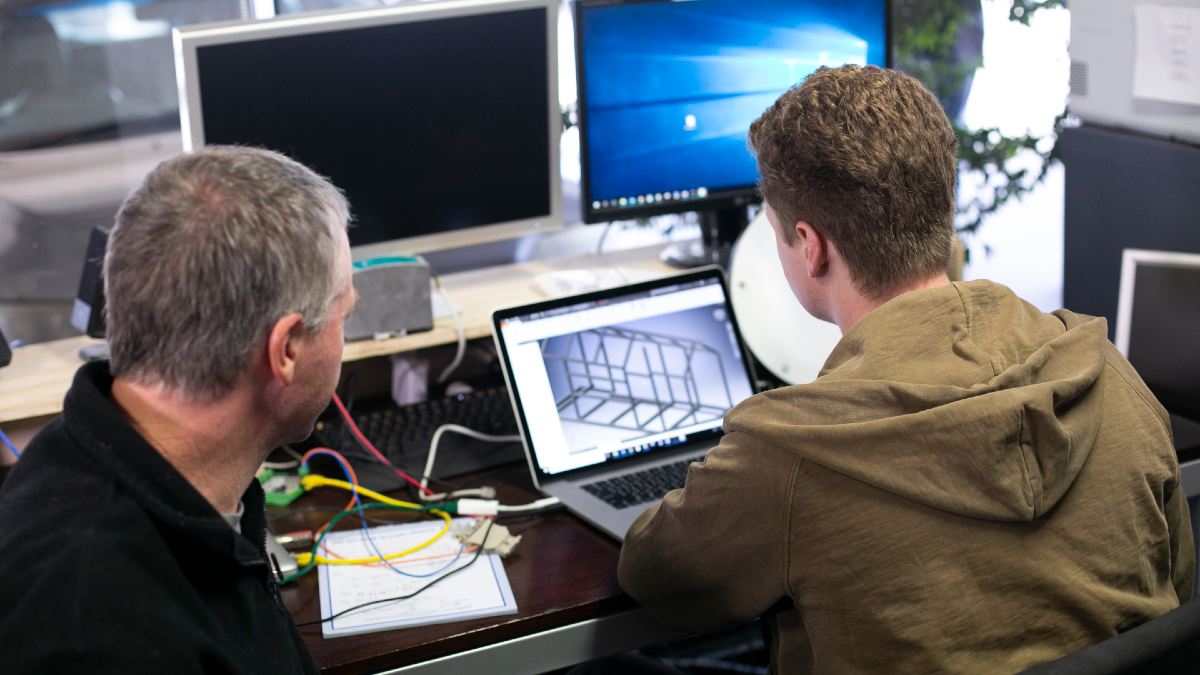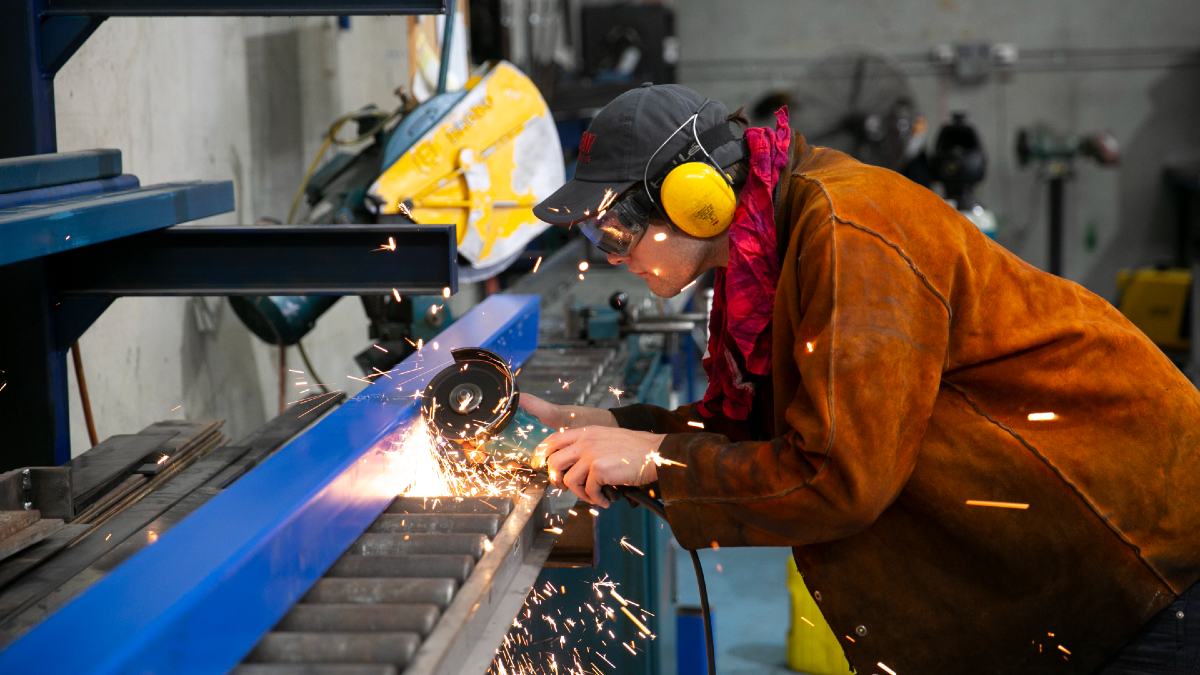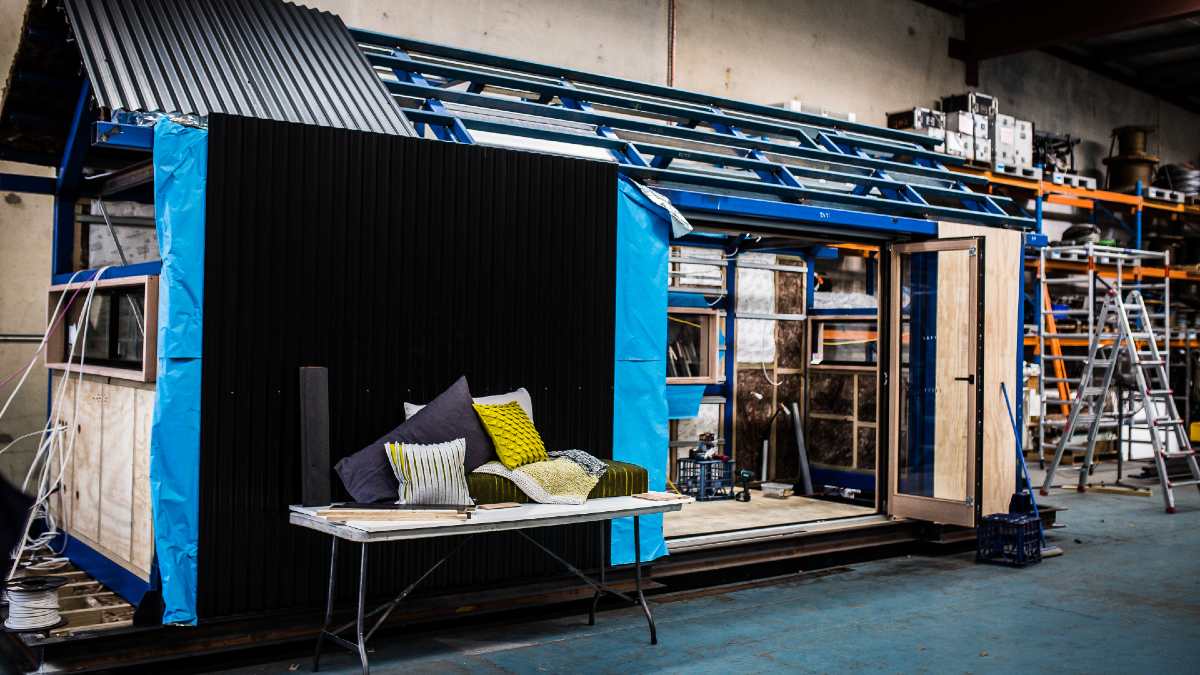Australians have fallen in love with air fryers. Discover how they work, their energy efficiency, what to avoid and which type is best for you.
RACV Tiny Home: small and mighty
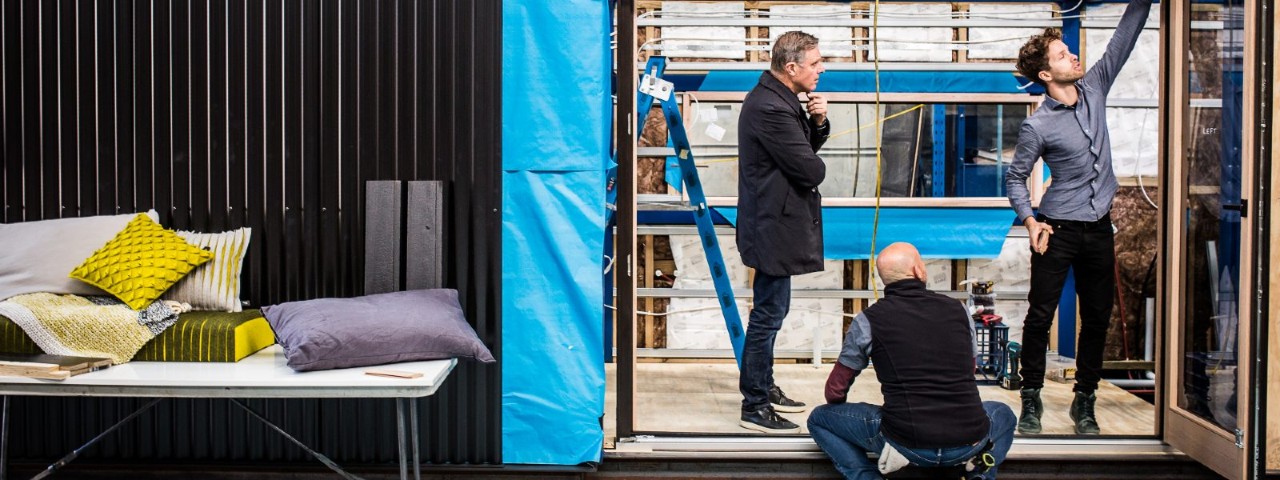
RACV’s Tiny Home project is changing the way Victorians think about what it takes to build a comfortable home that’s affordable to run.
For most Australians, wishing for a smaller home is like wishing for a smaller pay packet. We’re so infatuated with building McMansions, we’ve coined a term for it: living the great Australian dream. Until recently, the country claimed the largest average property size in the world – and we were proud of it, even if it meant spending beyond our means while struggling to manage the mortgage.
From the 1950s, Australia’s average house size more than doubled, to 248 square metres at its peak in 2008-09. Then last year something strange happened: the size of new builds dropped.
“We need to start changing the way we live,” says Bess Nolan-Cook, manager divisional programs, RACV Home.
“The cost of living is going up and people are feeling the pinch. Building and running a big house is not cheap, nor is it great for the environment. With advanced technology, we can live a lot smarter and more sustainably.”
Enter the Tiny Home movement, uniting like-minded individuals who are ditching big digs in favour of pared-down, efficient dwellings.
Rejecting the notion that more is, well, more, has been around for decades, given a jumpstart in the late ’90s by American author Jay Shafer. Today, there are books and blogs dedicated to the movement, as well as reality TV shows and consultants such as Shafer’s Tumblewood Tiny House Company.
With statistics showing Australians are finally open to denouncing conspicuous consumption, RACV embraced the crusade and embarked on an ambitious project to help Victorians re-evaluate the elements that contribute to a well-performing home, and in the process better understand what we really need to live comfortably and affordably.
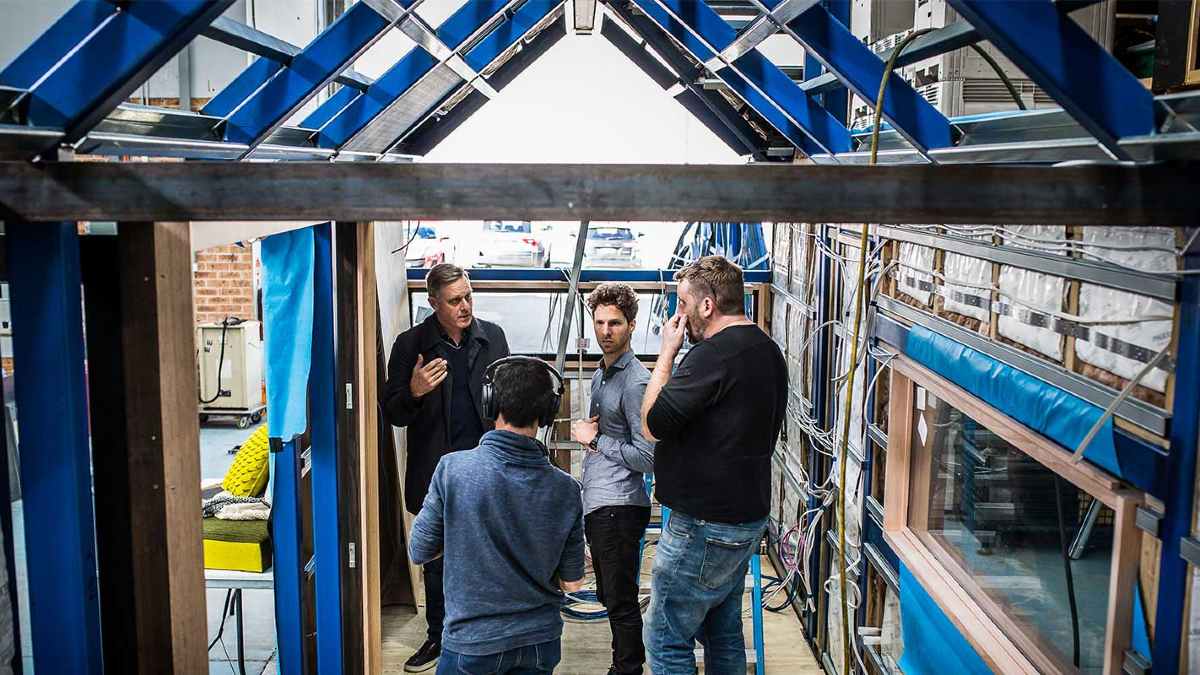
Grand Designs Australia's Peter Maddison checks in on construction of the Tiny Home. Photo: Rowena Meadows
“RACV came to me and said, ‘We have this big idea,’” says Peter Maddison, architect and host of Grand Designs Australia. Peter has seen, and drawn up blueprints for, some of the country’s most impressive residential building projects. The concept RACV presented him with was right up there in terms of ambition.
“We wanted Peter to conceptualise a home, but to think about the changing nature of how people are living,” says Bess. “The brief was to create a Tiny Home that was a credible source of information for Victorians and give them fantastic ideas they can implement, irrespective of whether they’re owners, builders or renters.”
Researching downsizing trends, Peter began plans for a single-cell unit only slightly bigger than a Kombi van in dimensions. Within that frame he needed to fit living essentials – places to sleep, cook and wash – and also integrate sustainable materials and technologies to streamline household functions.
With a floor space of just 18.75 square metres and a headspace of 3.6 metres, it’s easily the smallest project Peter has worked on. “But small doesn’t mean it’s not complex,” he says. “We’ve created an exemplar building that has a lot of high aspirations around the way we live today, including the cost to the environment and the cost of running a home. It’s everything that’s great about the Tiny Home movement – it can be can be put just about anywhere – but is also extremely forward-thinking in its tech applications.”
It may be petite, but the home is sturdy, weighing more than 7.5 tonnes thanks to a base and frame made from steel beams. “It can be taken anywhere on the back of a truck,” says Peter, which will happen after its debut at Open House Melbourne on 28 July – from there, the RACV Tiny Home will move around the state to reach as many Victorians as possible. “It had to be strong, given it will be travelling down freeways at 100kmh with potential 60kmh winds. It’s basically cyclone-proof,” he says.
The rest of Peter’s design is an extremely clever integration of natural and eco-friendly materials. There are four layers of insulation in the roof and walls and two in the floor, including one strata of phase change material that traps and stores energy and releases it later when needed, a bit like a rechargeable battery. Upper panels feature Danpalon, a recycled polycarbonate that insulates and lets in light. And it’s all wrapped in Colorbond and then covered in charred hardwood, keeping out the elements while looking good.
More natural light streams in through double-glazed windows, strategically placed at each end of the building to harness the breeze, and there are louvres above the kitchen so you can glimpse the sky while cooking on the induction stove.
“There’s a lot packed into the space; every corner and inch has been used,” says Greg Gowans, director and design engineer for Simple Motion, the team building the home. The compact all-black kitchen also has a sink and fridge, bookended by bench seating that doubles as storage space. The bathroom is even more intimate with a sink, shower and toilet – with windows at eye level, it gives new meaning to a loo with a view.
There’s additional storage – or perhaps a hammock-like bed – in the sturdy sash-cord net strung from the ceiling. It’s above the double bed, scattered with handmade felt cushions and a knitted throw by local design company Nuuk; the colour palette of charcoal, lime and yellow is a lovely complement to silvertop cladding on the walls and cork on the floor. Being here, warmed by the wood-burning potbelly stove, you can’t help but feel happy. And that’s the goal, says Peter.
“I wanted to give people a sense of connection with nature and exude a sense of wellbeing,” he says. “The home is sustainable but it’s also a joyous place that makes people smile.”
If you can’t get to power, the Tiny Home can run low-energy loads for basic lights, controls and water pumps using energy harnessed by four high-efficiency solar panels, stored in a lithium battery. There are two water tanks under the bed: one for rainwater collected from the roof – ideal for maintaining pot-plants lining the windows – and one for drinking water, while tanks for grey and black water are hidden using canary-yellow Envirowalk mesh that also folds out from the main entrance to create a theatrical sun shield. Paired with the insulation and glazing, the Tiny Home offers incredible energy savings.
“We’ve built it to a six-star standard but have improved energy efficiency on that,” says Bess. “In fact, the Tiny Home is 60 per cent more efficient than a standard six-star property. It’s incredible to see the dramatic impact a few improvements can have on the efficiency of your home.”
Perhaps where the Tiny Home stands out most from others of its ilk is in its application of smart technology to streamline household duties, saving energy and money in the process.
“Everything in the space can be controlled by your voice,” says Jono Boer, Simple Motion’s tech expert. Jono has installed a smart speaker system that uses voice commands or a tablet to control and track everything from the low-energy LED lights to security cameras, smoke detectors and a smart TV, which slips behind bench seating when not in use.
“We didn’t want the technology to be in your face,” Jono says. “You feel the effects, rather than seeing them.”
I test the system: “Google, turn on pendant at 50 per cent in red.” The pendant light above the foldout dining table turns on in a soft ruby glow. I can also set up a command for “Good morning,” to open blinds and put on the kettle, and “Goodbye,” to arm the cameras and turn out the lights. At the touch of a button I can monitor how much energy the solar panels are storing, and see how full the water and waste tanks are.
“You can use everything as separate units, but this system also brings things together into one ‘smart things’ ecosystem,” says Jono, “This not only makes it easy to operate but everything can work together to maximise efficiency.”
“I think this Tiny Home answers a lot of questions as to what makes a home comfortable and sustainable,” says Peter. “It’s a very relevant exercise at the moment, given the current cost of housing, land availability and the state of the environment. Australians are looking for alternative solutions. I really believe there’s a big future in it.”
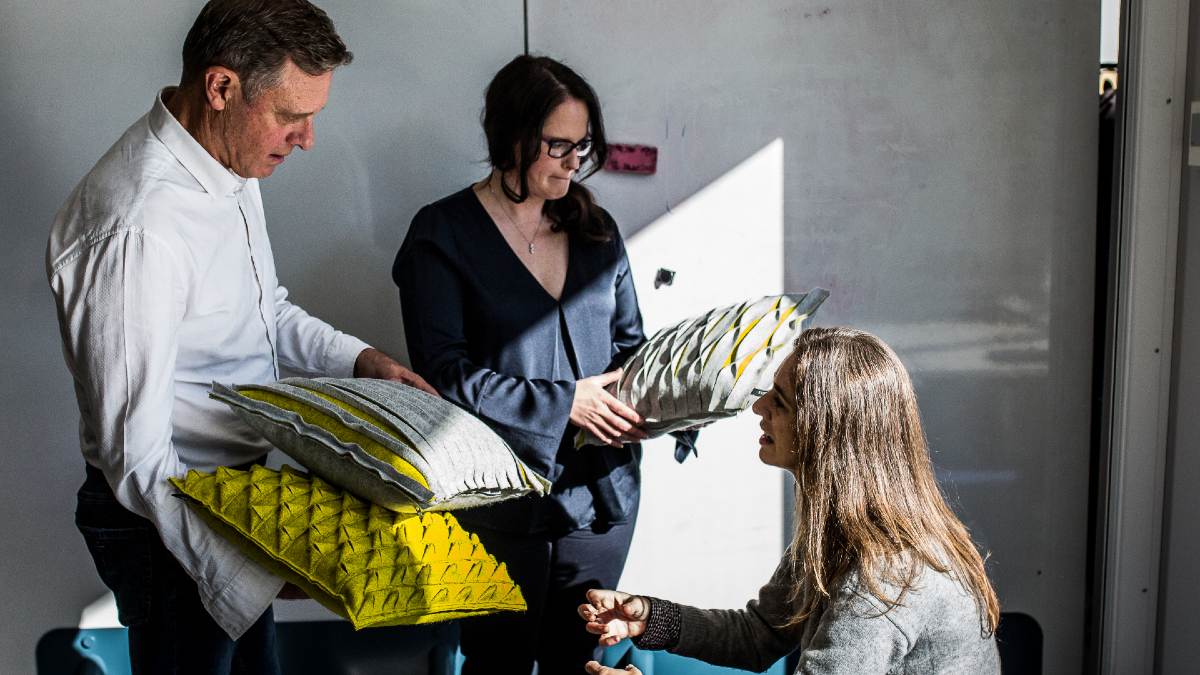
5 tips to take from the Tiny Home
- Smart lighting. Lights don’t need to run at 100 per cent all of the time. Smart LED lighting allows you to control how bright spaces are, and how much energy is used, at the touch of a button.
- Go natural. Using natural materials such as sustainably sourced hardwood, cork and wool makes even the smallest space feel welcoming and warm.
- Follow the sun. Think about the direction your home is facing if you’re building from scratch – place windows strategically to maximise light and natural warmth from the sun.
- Solar power. A small number of solar panels can generate enough energy to do most things around a home – you might even make money selling surplus energy back to the grid.
- Streamline. You can streamline the way you live and also save money by using coordinated technology solutions.
Population pressures
While Melbourne had around three million people 20 years ago, that number is now closer to five. Census projections show the population will hit 10 million by 2050, making the city one of the fastest-growing metropolises in the rich world, forecast to overtake Sydney as Australia’s biggest.
The Urban Development Institute of Australia predicts Victoria needs to add 60,000 new homes to its landscape each year for more than a decade to house the swelling population. We need to build smarter to accommodate them, and RACV’s Tiny Home is an example of the type of thinking that will be needed.
